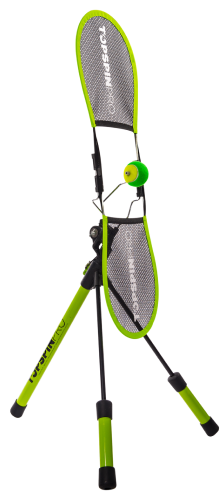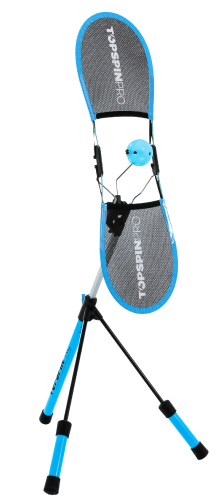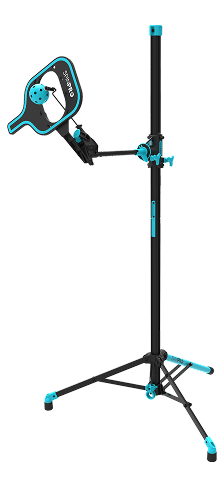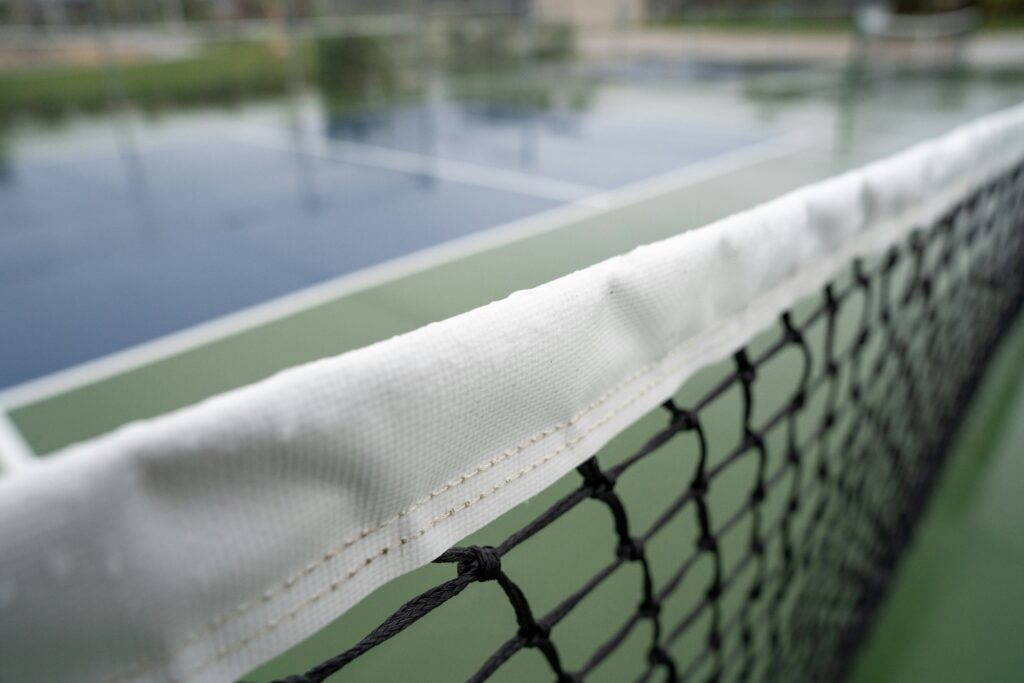Pickleball is a game of precision, timing, and feel and few things disrupt those elements more than the weather. Because the ball is so light, it’s far more affected by environmental conditions than in other racket sports like tennis or padel. Whether you’re playing in the thin air of the mountains or under the blazing heat of the desert sun, weather and climate can dramatically change how the game feels and plays.
In this guide, we’ll break down how temperature, altitude, humidity, wind and climate all influence your performance and how to adapt your game accordingly.
Temperature
🔥 Hot Weather
If you’ve ever played in extra warm conditions, you know just how demanding it can be especially physically. Hot weather is one of the toughest environments to perform in, and it affects everything from ball behavior to your energy levels. Here’s how it impacts your game:
Balls - In the heat, pickleballs tend to soften and feel “mushy”. You’ll notice your regular shots don’t travel as far, requiring more effort to generate the same depth. Because the ball compresses more on contact, shots are more likely to fall short or hit the net. The ball also travels slower through the air, meaning you’ll need to swing harder to maintain pace. Hot conditions often produce a lower bounce, especially on outdoor courts that absorb heat. This means you’ll need more swing effort to lift the ball, and physically you’ll be forced to get lower with your legs to stay in control, which adds to fatigue over time.
Paddle - Your paddle can also feel slightly softer in the heat, reducing responsiveness on touch shots. Additionally, grips can quickly become slick due to sweat, so it’s a good idea to bring extra overgrips or towels to maintain control.
Player Performance - Heat takes a toll on your body. Players fatigue faster, especially in direct sun, which leads to slower reaction time, heavier footwork, and increased risk of error. Because the ball travels slower, you’ll find yourself needing to generate more power, adding even more strain on your body.
Tips for playing in the heat: Expect long rallies and low, slow bounce. Use angles and placement to build points. Takes breaks and timeouts where needed. Use the shade as much as possible and hydrate regularly. Taking cooling towels and ice cubes can also help during breaks.
❄️ Cold Weather
Cold conditions can dramatically change how pickleball feels and plays. From the behavior of the ball to how your body moves, cold weather introduces unique challenges that require you to adjust your technique, gear, and mindset.
Balls - In cold temperatures, pickleballs feel harder, faster, and more brittle. They lose flexibility, which makes them less forgiving on contact and more prone to cracking, especially on rough surfaces. The firmer feel also means that the ball can ping off your paddle quickly, making soft control shots harder to execute. You might expect a lower bounce in cold weather, but often the bounce becomes higher and more unpredictable, particularly when wind or uneven surfaces are involved. Because the ball is stiffer, it rebounds more sharply off the court and the paddle, making timing more difficult.
Paddle - Your paddle and grip can feel stiffer or less responsive in the cold. Materials such as carbon fiber or graphite behave differently at lower temperatures, offering less touch and feel on delicate shots. And let’s not forget your hands, cold fingers reduce dexterity, which can throw off your reaction time and fine motor control.
Player Performance - Your body also takes longer to warm up in the cold, which increases the risk of muscle strains, joint stiffness, and injury especially in explosive movements. Cold weather demands a longer, more dynamic warm-up, and consistent movement between points to stay loose and maintain coordination.
Tips for playing in the cold: Expect fast paced rallies. play more aggressive to capitalize on the faster speed, use shorter swings, have spare balls in case of cracking, take extra layers to keep warm between games.
Humidity
Extreme humidity, whether high or low, can significantly affect how pickleball feels and plays. It influences not just the ball and your gear, but also how your body responds to effort and recovery. Here’s how both ends of the spectrum can impact your performance:
💧 High Humidity
High humidity creates a heavy, moisture-rich atmosphere that affects both the ball’s behavior and player comfort.
Ball - The ball tends to feel heavier and more sluggish in humid air. It may not bounce as high and can feel slightly “dead” off the paddle, especially after prolonged rallies. The increased moisture in the air makes the ball carry less, which means you may need to generate more power to maintain depth. The air is thicker, which slightly reduces ball speed and spin effect. This means shots may sit up more or lose the sharpness you’re used to in drier conditions.
Paddle - Paddles often feel slick, and grips can become slippery very quickly. Many players switch out overgrips mid-session or carry absorbent towels to maintain paddle control.
Player Performance - Humidity causes the body to sweat more, but sweat doesn’t evaporate easily, meaning your body struggles to cool down efficiently. This can lead to faster fatigue, overheating, and a greater need for hydration and electrolyte management. You’ll also feel heavier and less explosive, especially in long rallies. In extreme humidity, even the court surface or lines may become slick, increasing the risk of slipping.
Tips for playing in high humidity - Use a towel and change overgrips, change socks to avoid blisters and also wet clothing. Hydrate regularly.
🌵 Low Humidity
Low humidity, common in dry, arid climates, brings a completely different set of challenges.
Ball - The ball feels livelier and faster off the paddle, with a slightly higher bounce. It moves through the air more quickly, often requiring players to adjust timing and add more spin to maintain control.
Player Performance - Sweat evaporates quickly, which can fool players into thinking they’re not sweating much. In reality, you’re losing fluids constantly, and dehydration sneaks up quickly in these conditions, especially during long matches.
Tips for playing in low humidity - Pre-hydrate before arriving at courts, keep a shorter swing, use the speed to your advantage.
High Altitude
Balls - High altitude makes the ball travel faster and farther due to the thinner air. Spin is reduced, making any shots hit with topspin or slice harder to control. The control effects of topspin are also reduced meaning you can't rely on it in the same way. Timing is harder. Shots come at you quicker, but with less dip.
Player Performance - Endurance is reduced; shortness of breath and muscle fatigue can kick in sooner.
Tips for playing at altitude - Use balls designed for high-altitude play when possible. You may also want to use a paddle with more control-focused features.
Wind
If you play outdoors, you know that wind is one of the most unpredictable and frustrating factors in pickleball! Because the ball is so light, even a mild breeze can dramatically alter its flight path. Wind forces players to adjust their timing, shot selection, footwork, and mental focus.
Balls - Tossed serves become more erratic. Even a slight gust can move the ball mid-air, throwing off your rhythm and making consistent serving a challenge. Lobs often drift long when hit with the wind, and dinks can fall short when hit into it. The margin for error shrinks dramatically. With the wind behind you, the ball tends to sail farther and faster, making it harder to control depth and landing areas. Against the wind, the ball drops sooner and loses speed quickly, requiring more force to get it over the net and keep it deep. Crosswinds are especially tricky they can push your shots off target and disrupt your balance and footwork, making shot timing more difficult.
Tips for Playing in the Wind - Stay Low and Balanced, shorten your swing, add margin to your shots, use topspin for control and avoid slice,
Final Thoughts: Adapt Like a Pro
Pickleball is as much about adjustment as it is about technique. The best players don’t just hit great shots, they know how to adapt to conditions. Whether you’re playing at sea level or in the mountains, in heat or humidity, being aware of how weather affects your game can give you a serious edge.
👉 Know your conditions. Adjust your strategy. Play smarter.
Win With Topspin Course
Our Win With Topspin Course is an in depth guide to mastering topspin on every pickleball shot. Quickly develop highly effective topspin serves, dinks and groundstrokes to give your game the edge and build confidence with either the TopspinPro or the SpinPro.

FAQs
-
How does hot weather affect pickleball play?
In hot weather, pickleballs tend to soften and feel “mushy”, requiring more effort to generate depth as they travel slower through the air. Paddles may feel less responsive and grips can become slick due to sweat, making it challenging to maintain control. Players often experience faster fatigue, slower reaction times, and increased risk of errors, necessitating the use of angles and placement to build points, along with regular hydration and breaks.
-
What are the challenges of playing pickleball in cold weather?
Cold weather makes pickleballs feel harder and faster, leading to less forgiving contacts and a higher, more unpredictable bounce. Paddles and grips may become stiffer, reducing touch on delicate shots, and cold fingers can impact reaction time. Players need longer warm-ups to prevent muscle strains and should expect fast-paced rallies, requiring them to play more aggressively with shorter swings.
-
How does humidity impact pickleball performance?
High humidity causes the ball to feel heavier and more sluggish, while players may fatigue faster due to inefficient cooling from sweat. It often requires players to generate more power to maintain depth, and grips can become slippery, necessitating frequent towel use. In low humidity, the ball feels livelier and faster, but players may underestimate fluid loss, risking dehydration during long matches.
-
What adjustments should players make when playing pickleball at high altitudes?
At high altitudes, the ball travels faster and spin effects are reduced, making topspin and slice shots harder to control. Players may experience reduced endurance and quicker onset of fatigue, so using balls designed for high-altitude play and paddles with more control-focused features can help. Adjusting timing is crucial as shots arrive quicker but with less dip.
-
How does wind influence pickleball gameplay and what strategies can help?
Wind can dramatically alter the ball’s flight path, affecting timing, shot selection, and footwork. Tossed serves and lobs become erratic, and shots hit with or against the wind require adjustments in force and control. Players should stay low and balanced, shorten swings, add margin for error, and use topspin for better control, while avoiding slice shots.
Enjoyed this article?
Be sure to sign up for our newsletter and we'll keep you up to date about new posts



